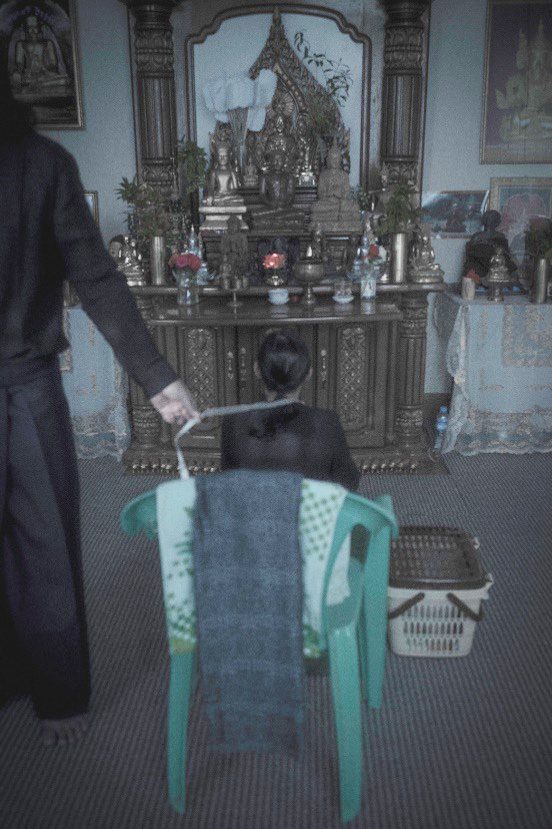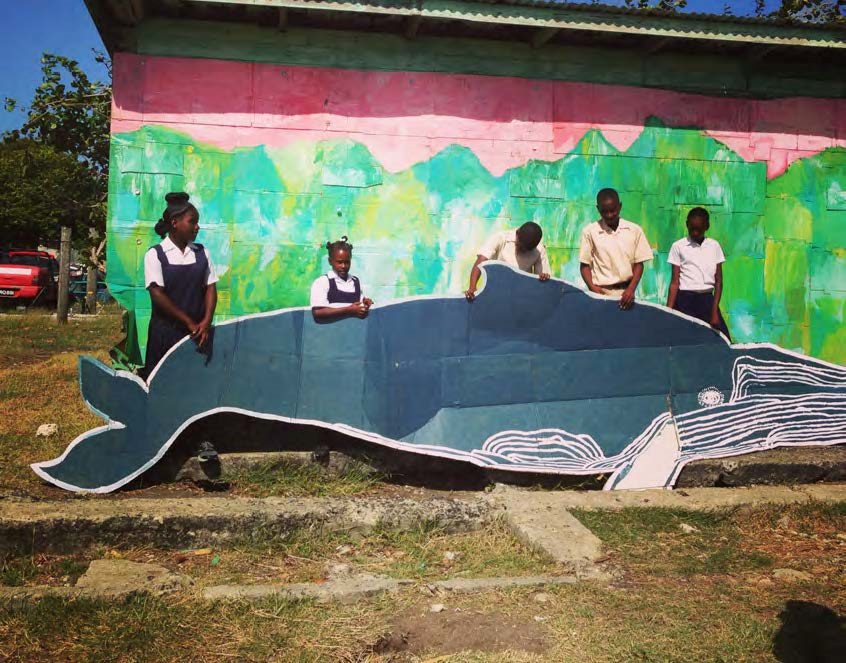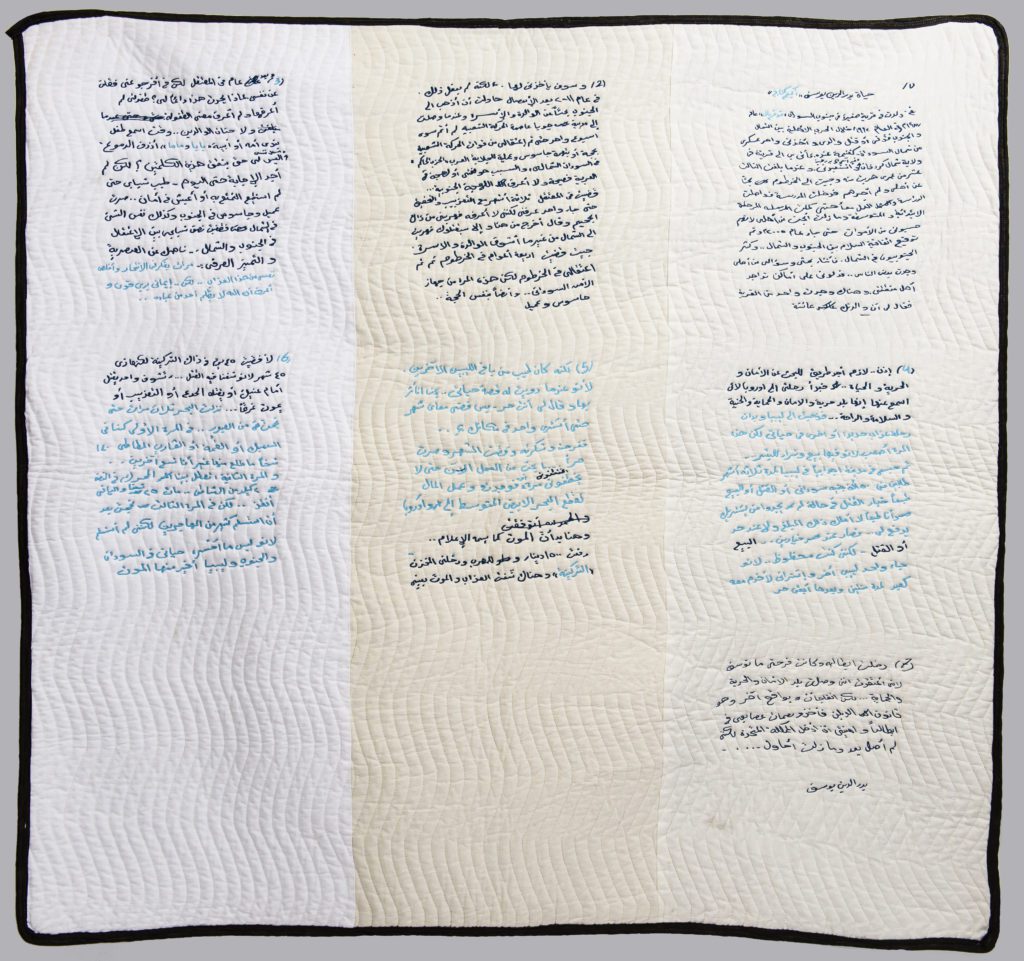EDITOR’S NOTE: Dr. Chin Davidson reviews the group show Transitions and Transformations: The Constant Flux of our Personal Structures, featuring Geraldine Ondrizek and Reed College associates, at Palazzo Bembo in the 2022 Venice Biennale, Venice, Italy, April 23- November 27, 2022.

Personal Structures, Reflections, European Cultural Centre, Palazzo Bembo, Venice, Italy. Curator, Lucia Pedrana and Geraldine Ondrizek APRIL 23- NOVEMBER 27 2022
The group exhibition, Transitions and Transformations: The Constant Flux of our Personal Structures, is a timely contribution to the sixth edition of the European Cultural Centre’s (ECC) ongoing Personal Structures project at the Venice Biennale, bringing ‘artists and creative minds from across the world’ to convene in Venice. For this exhibition, ECC curator Lucia Pedrana first invited Oregon artist Geraldine Ondrizek, who, in turn, selected and organized the work of fifteen other Reed College-affiliated artists and scientists (including her own work). All were to develop intersecting themes – Biological, Environmental, and Socio-political factors – connected by an empathetic gaze toward life processes between human and non-human contexts. The artists explored biological, geographical, and social ecologies from their specific global and cultural locations in Chile, Myanmar, Brazil, Norway, and India, in addition to the United States.
Geraldine Ondrizek’s The First 100 Hours combines books, silk panels, and film, to constitute the frontispiece for the group installation which is staged as a library or a reading-room gallery within the fifteenth-century grandeur of the Palazzo Bembo on the Grand Canal. All the works in the show are presented as individual artist’s books in this Venetian showcase that becomes an archive for the Books of Life. Created in collaboration with Dr. Shizuko Takahashi at the University of Tokyo, Department of Biomedical Ethics, The First 100 Hours documents the reproductive development of in-vitro embryos and the epigenetic changes (or modifications of DNA) that result from environmental factors. Ondrizek opens the exhibition with a female-identified stance toward the ownership and power of biological representation.
Presented together, the empathetic processes between biology and environment resonate as deeply interconnected contexts.Chilean artist and scientist, Fernanda X. Oyarzún, collaborated with muralist Alonso Salasar to acknowledge environmental factors that continue to affect the survival of communities in Chile. Painted in the Latin American tradition, their series of site-based murals are located in the diminishing fishing communities of Arica, Chungungo, Tongoy, Coliumo, Caleta el Manzano, Hornopirén, and others from the ValparaÃso Region. Oyarzún also worked with artist Genevieve Tremblay to develop four corresponding virtual murals to create an immersive experience. As bodies of water around the world are increasingly salinated and dried up, entire villages are diminished, resulting in the loss of long-held relationships between humans and fishing.
In respect to socio-political factors, an empathetic perspective acknowledges the judgments and biases of industrial humanity toward living, environmental organisms considered as ‘expendable nature.’ This is no different from the degradation of the humanity of refugees and migrants who are in exile not only from countries under political upheaval but also from cities and neighborhoods in the affluent United States. Trails of Absence, archival digital prints and video work by the artist Sai (who remains unnamed for protection), captures their relationship with their father who is currently imprisoned by the Burmese junta since the February 1, 2021 coup in Myanmar. Political protesters are among the 8,835 people arrested or sentenced while their families often suffer torture and death by the Myanmar militia. The documentary function of the film record continues to serve unseen communities including those whom most people refuse to ‘look’ at. In Portland, Oregon, artist Nili Yosha works with the same viewing lens as she leads the Film Collective for Homeless Youth to document the marginalized young people experiencing homelessness amidst the current housing crisis there. Yosha was born in Tel Aviv, and as the daughter of independent filmmakers, her worldview was informed by her parents’ convictions in producing Israel’s first anti-war film, Shalom: The Wayfarers Prayer (1973). Yosha founded her filmmaking program in 2009 to give voice to an underrepresented population in the United States. Similarly, artist Lila Roos works with youth populations in St. Vincent and the Grenadines to create artworks that celebrate the heritage of their whaling ancestors in the Caribbeans. In addition, artist Stephanie Gervais’s collaboration with Badr from South Sudan chronicles his journey, beginning with his kidnapping as a child, by embroidering his story in Arabic text on a blanket. Gervais and Roos’s collaborations are both represented in Transitions and Transformations: The Constant Flux of our Personal Structures.
This collateral exhibition at the Venice Biennale provides an intersubjective look at the politics of empathy by exhibiting the images and narratives that represent the intersecting factors for the survival of human and non-human life. Perhaps empathy is the most important factor for humans who ultimately need to understand their interdependence on ecologies that often seem disparate and detached from their existence.

GERALDINE ONDRIZEK, The First 100 Hours, 2022. Artist book, silk panels and film made in collaboration with Shizuko Imai Takahashi (M.D. Ph.D, the University of Tokyo, Graduate School of Medicine, Department of Biomedical Ethics). Ondrizek’s work chronicles the most important period of human genetic development. The ability for all human life to survive and thrive in these first 100 hours depends on biological, environmental and socio-political factors

THE SKY IS OUR SEA. Fernanda X. Oyarzún and Genevieve G. Tremblay. Artist books, video and Augmented Reality (AR), a collaboration. Mural painting acts as a mirror of communities, including the specific forms of sea life identified by scientist Oyarzún and depicted to make visible the whole of the inhabitants of a community. She led the co-creation of a series of site based murals by Chilean muralist Alonso Salazar that reach deeply into seven fishing communities.

SAI, Trails of Absence, 2022. Archival digital prints, video. Sai’s (a pseudonym) ongoing work follows the political turmoil that has engulfed Myanmar since the coup of 2021. Seeing the arrest of his father, the end of his personal freedom and the shattering of hopes for his country, in the dark of night he went back to the home where his parents lived to document the loss.

LAST DAYZ, 2022. Stunnaboii.Z raps with raw emotion over footage of protesters clashing with police in Portland Oregon during the Black Lives Matter protests in 2020. Nili Yosha is executive director of Films, Outside the Frame, A Film Collective for Homeless Youth in Portland.

NEW ROOTS – ALL AH WE/ WOMB, Lila Roos, Video, Artist book. Based in St. Vincent and the Grenadines islands, New Roots is a youth program centered around the empowerment of community to support heritage, culture, ecology, and sustainability. Through the creative arts— painting, poetry, performance, dancing, and music — New Roots hopes to instill a sense of pride in the youth so that they care for their natural resources, learn from their elders, and continue to evolve into cultural and environmental leaders in their community.

BADR CLOSE UP, embroidered quilted blanket. Badr was a part of Gervais’ one-person exhibition, Gulalhi, a multimedia installation and conceptual portrait focused on the daily life of the refugee camp as a transitional border space, incorporating photography, typewritten documents, and intricate text-based sculptures. The text inscribed on the blanket is a seven-page story written in Arabic by Badr, a man from South Sudan, who shared his story with Gervais in 2018. The story chronicles his life, beginning with his kidnapping in South Sudan as a child, followed by his journey to Europe.
Transitions and Transformations: The Constant Flux of our Personal Structures at the Palazzo Bembo in the 2022 Venice Biennale, Venice, Italy, continues through November 27, 2022
The work in this exhibition was made possible through generous grants from; the Oregon Arts Commission, The Ford Family Foundation, Reed College, Emergent ArtSpace, Outside The Frame, ANID Millennium Science Initiative Program, Millennium Institute SECOS, Fondart Regional 2020, Chile
WEAD MAGAZINE ISSUE No. 13, THE ART OF EMPATHY
Published November 2022
